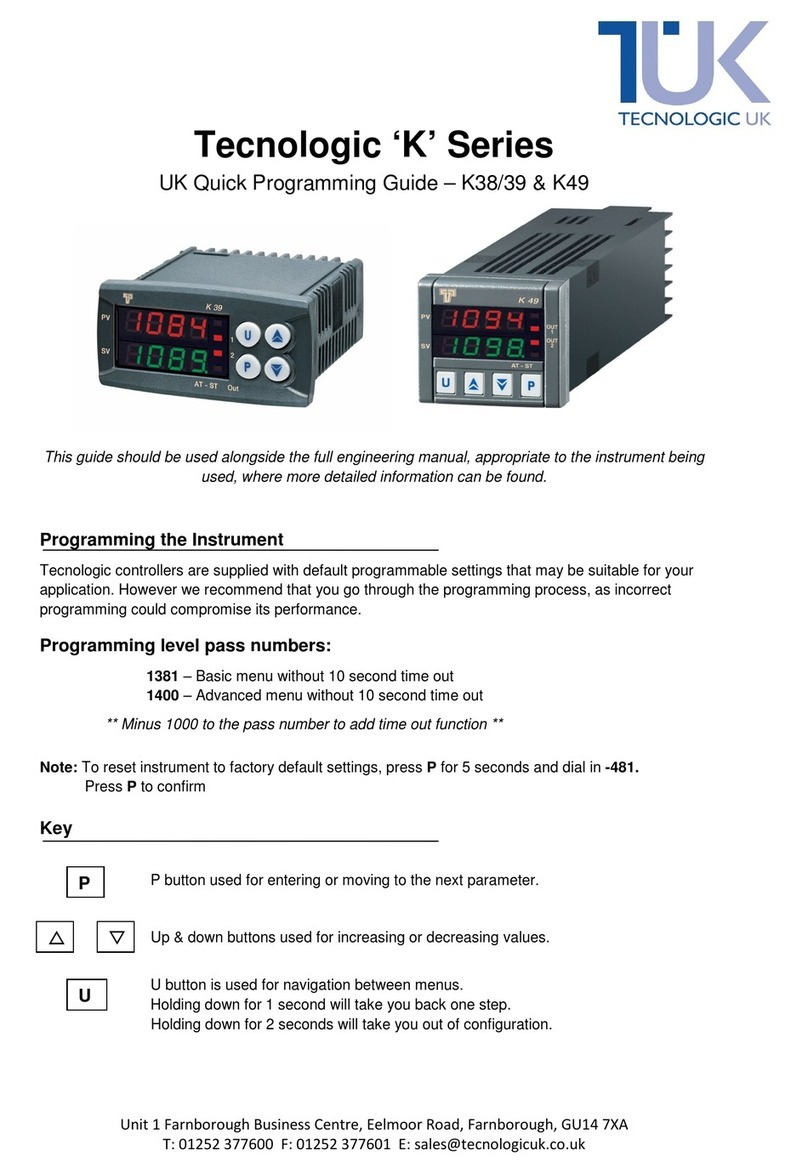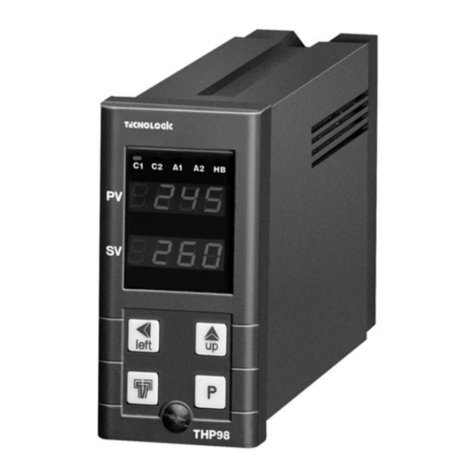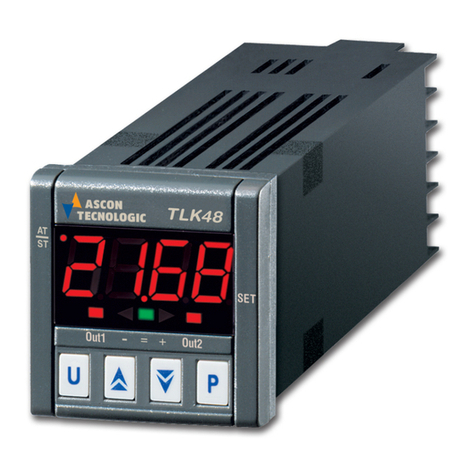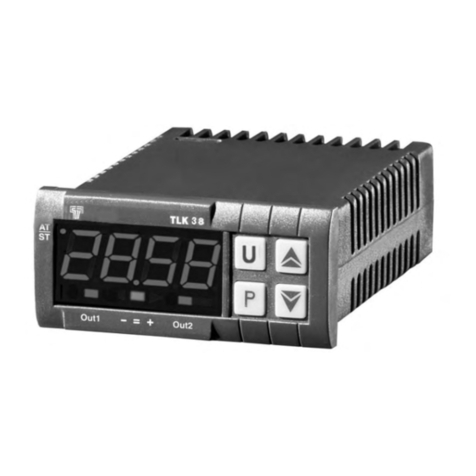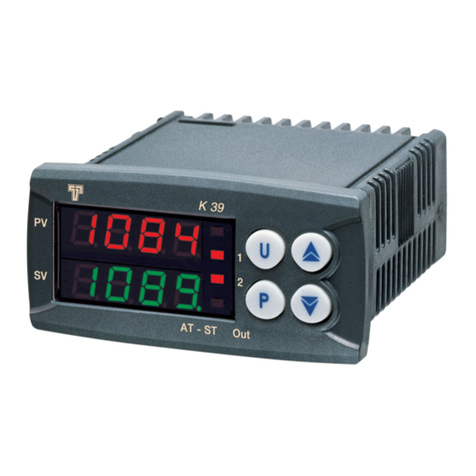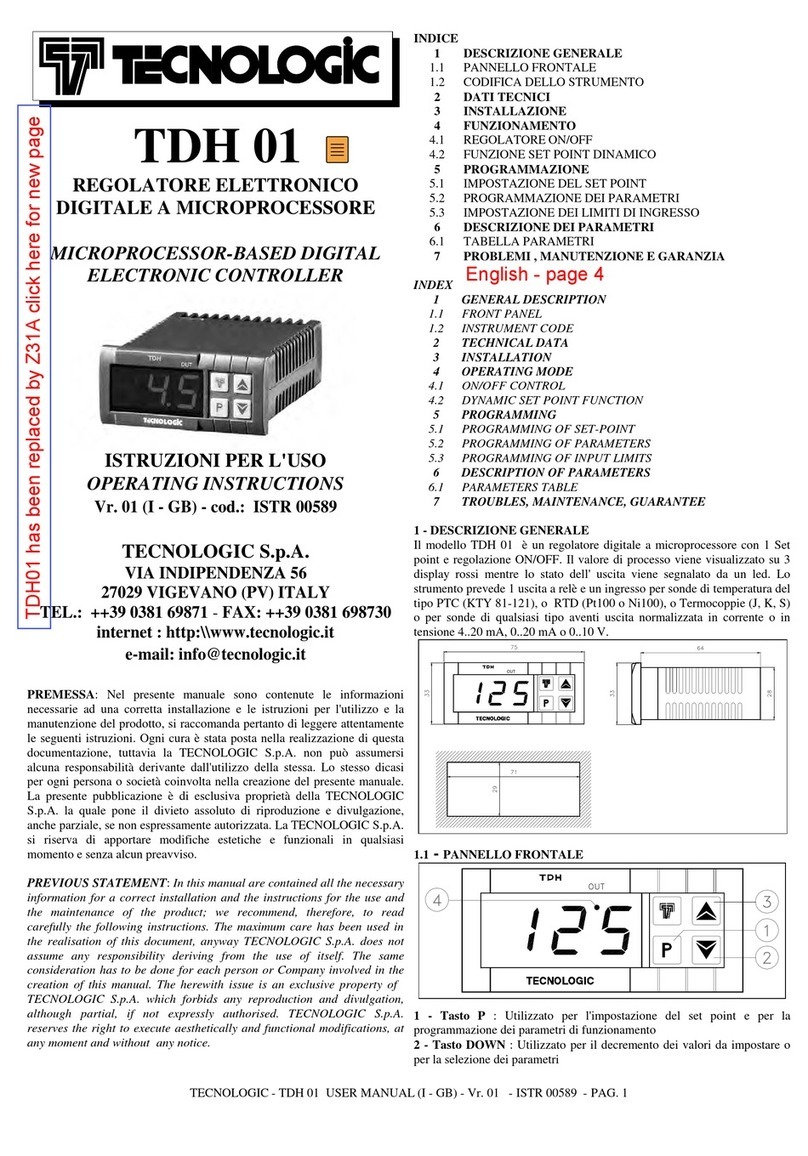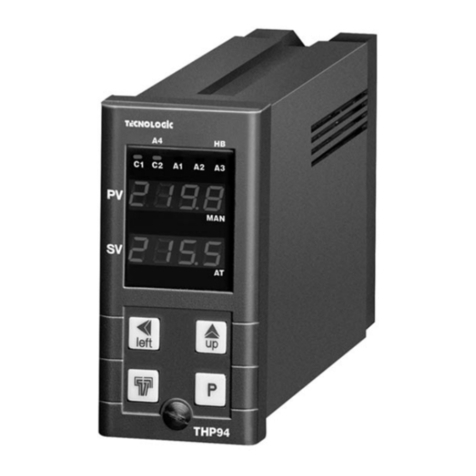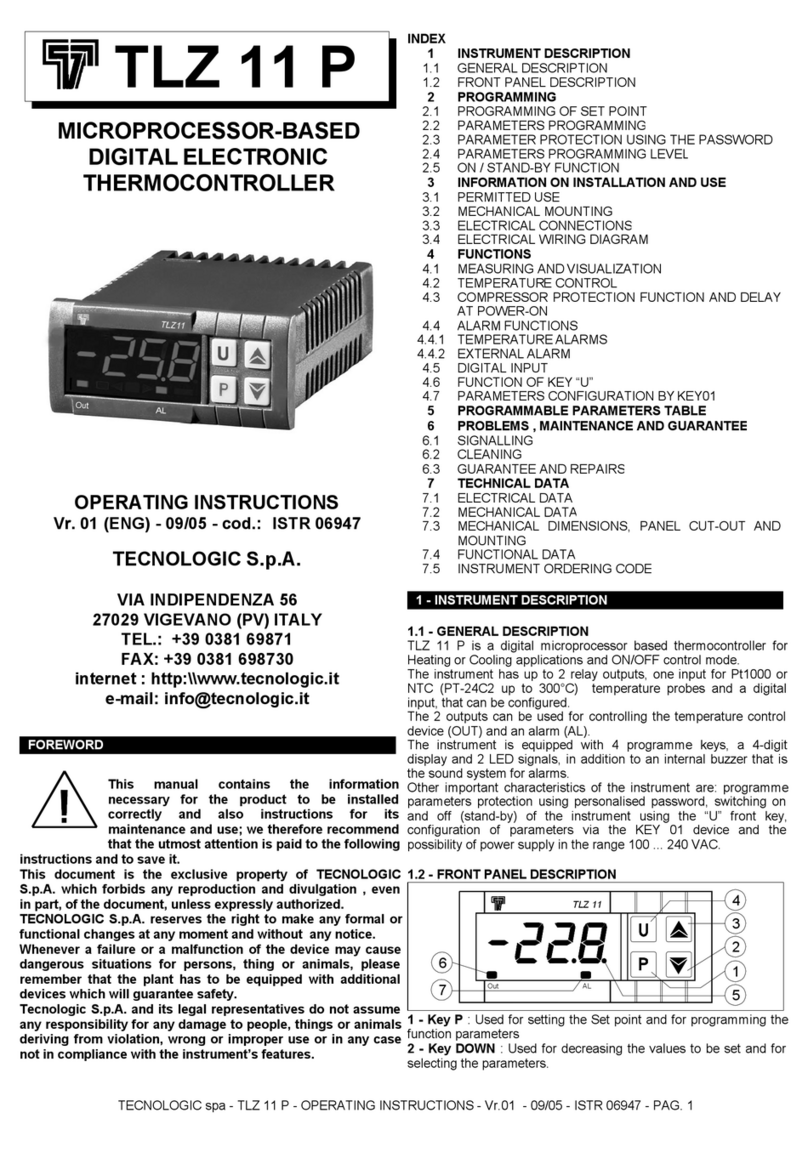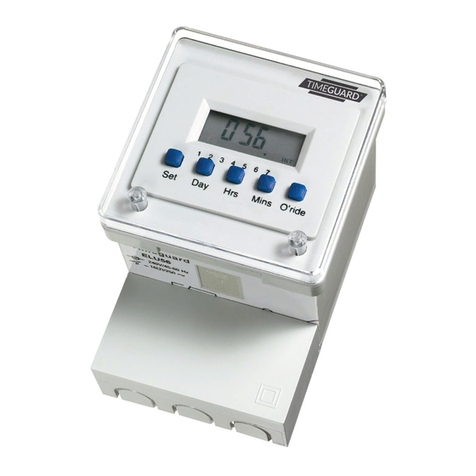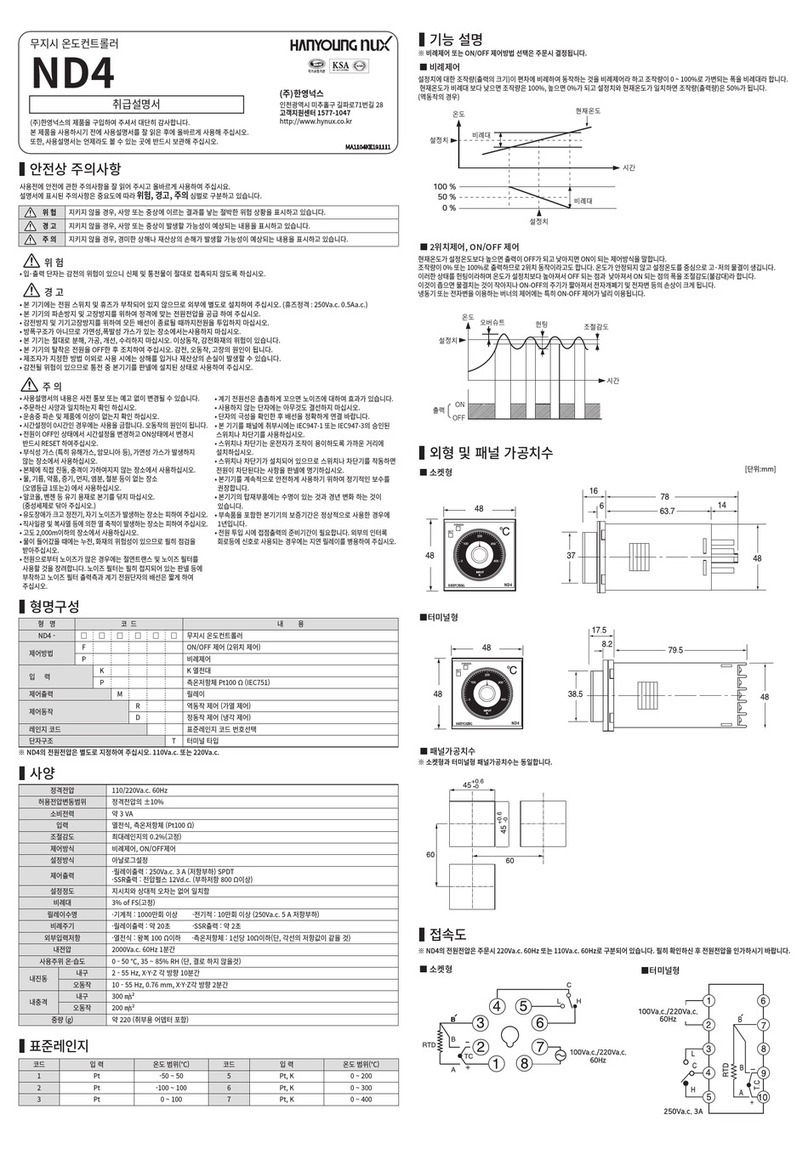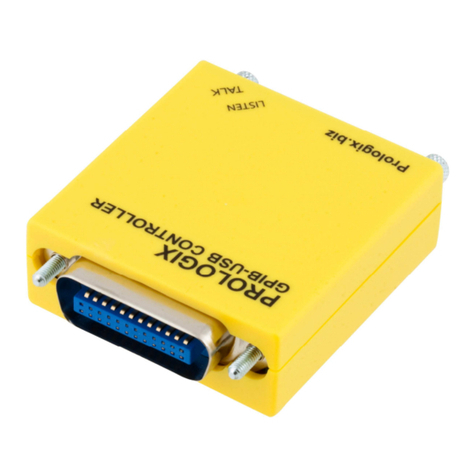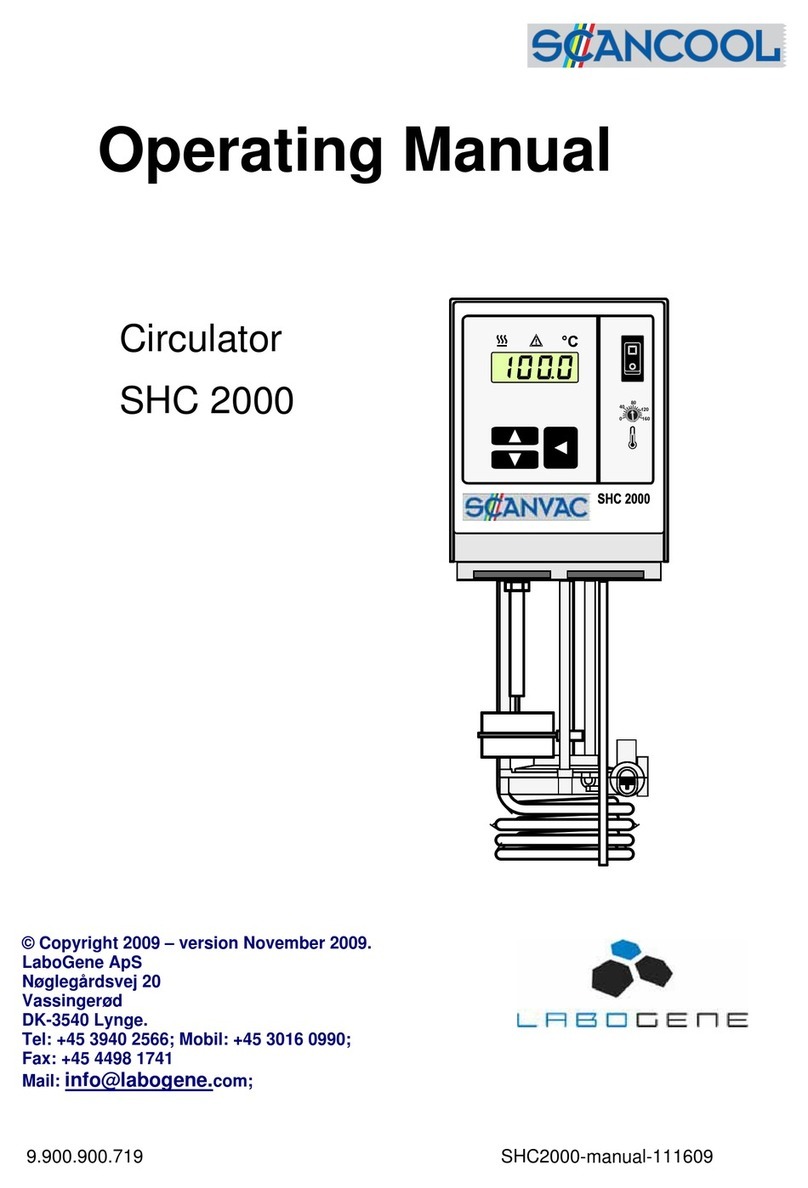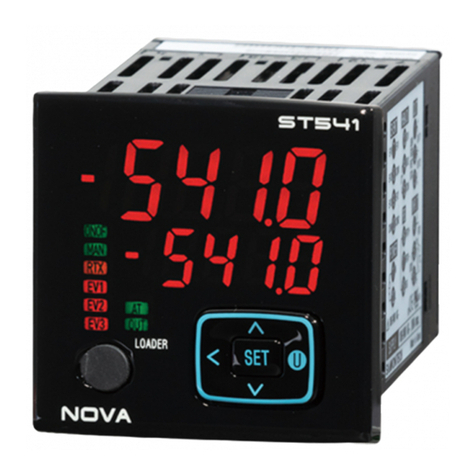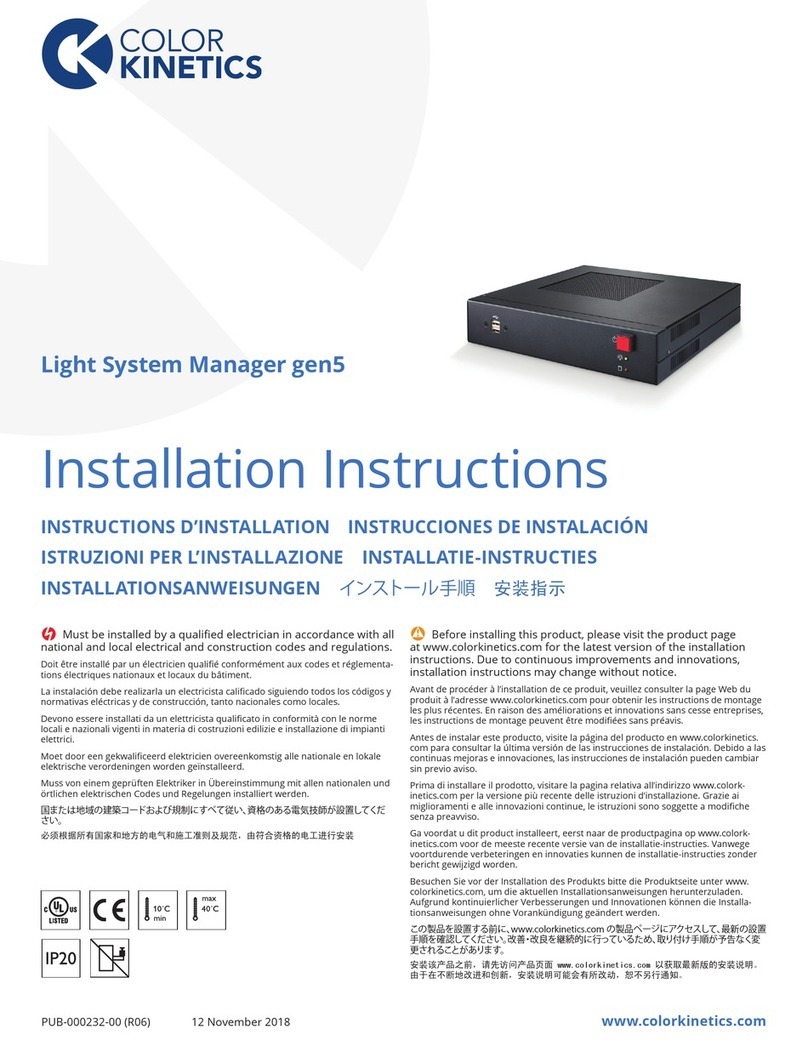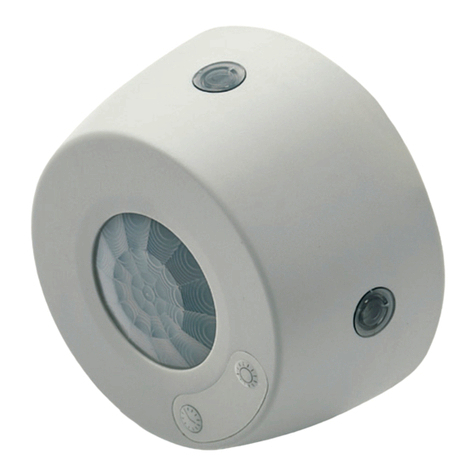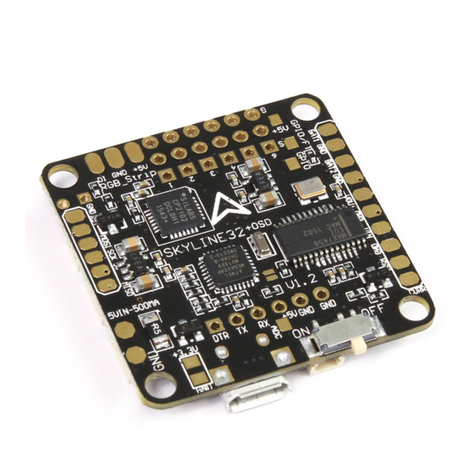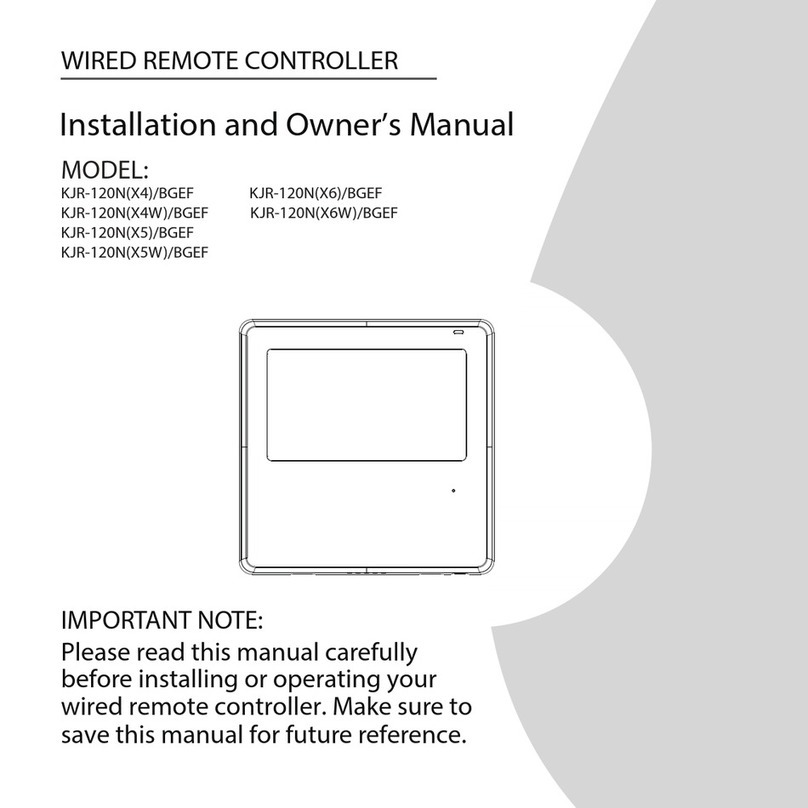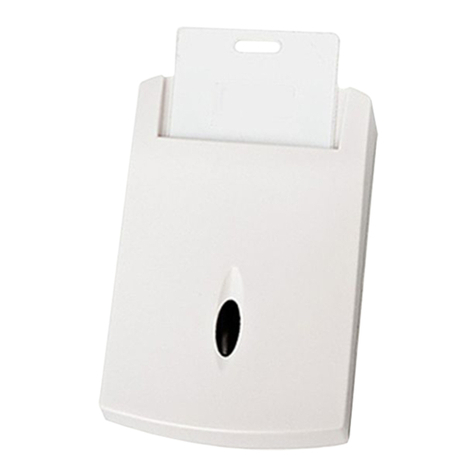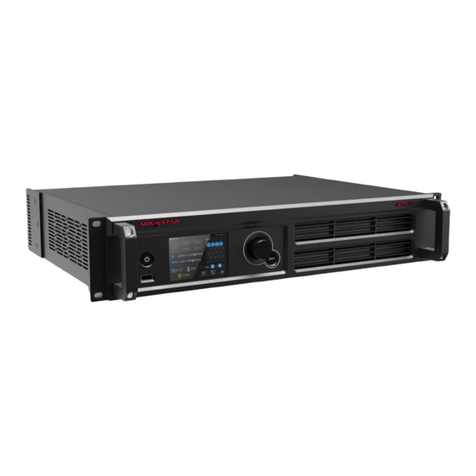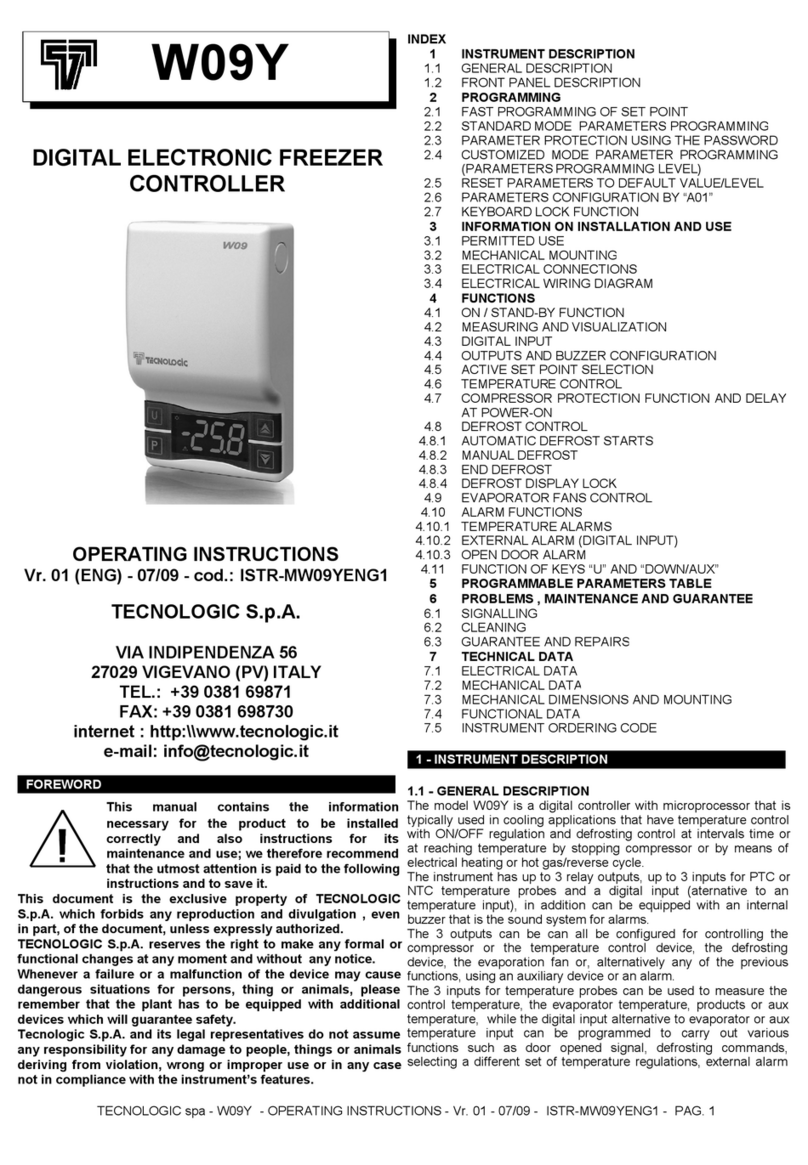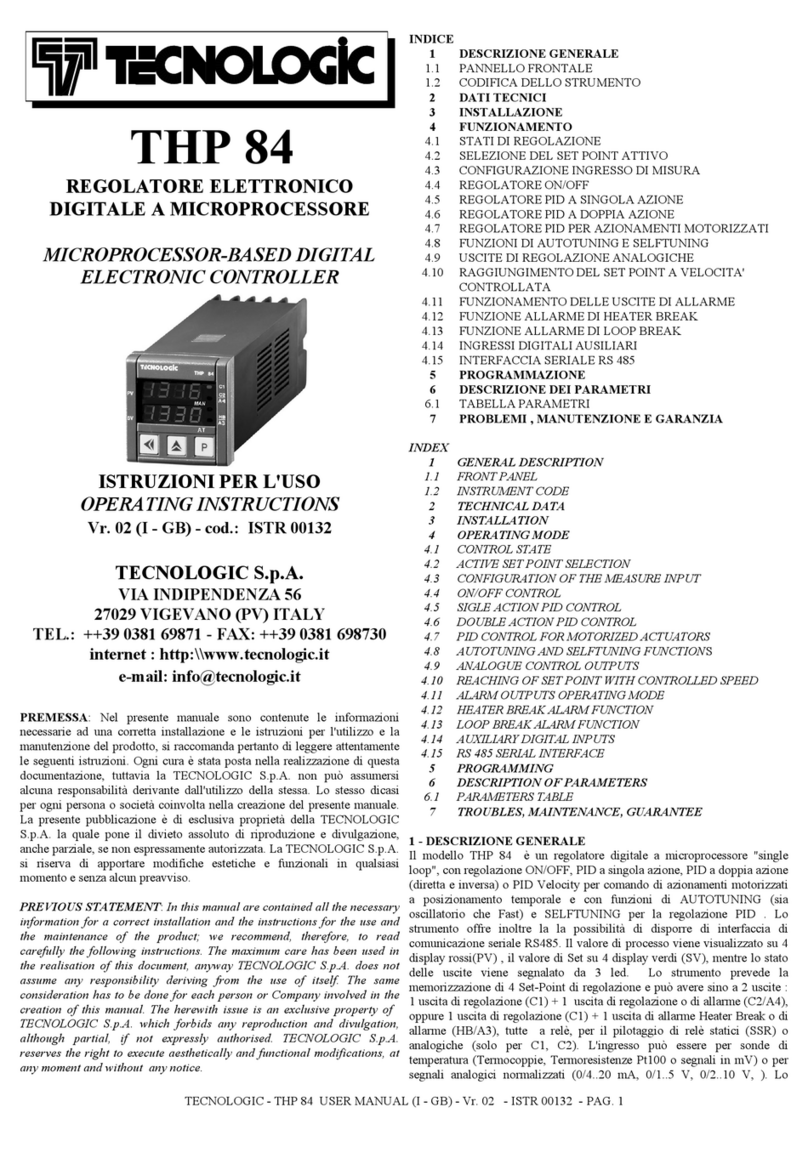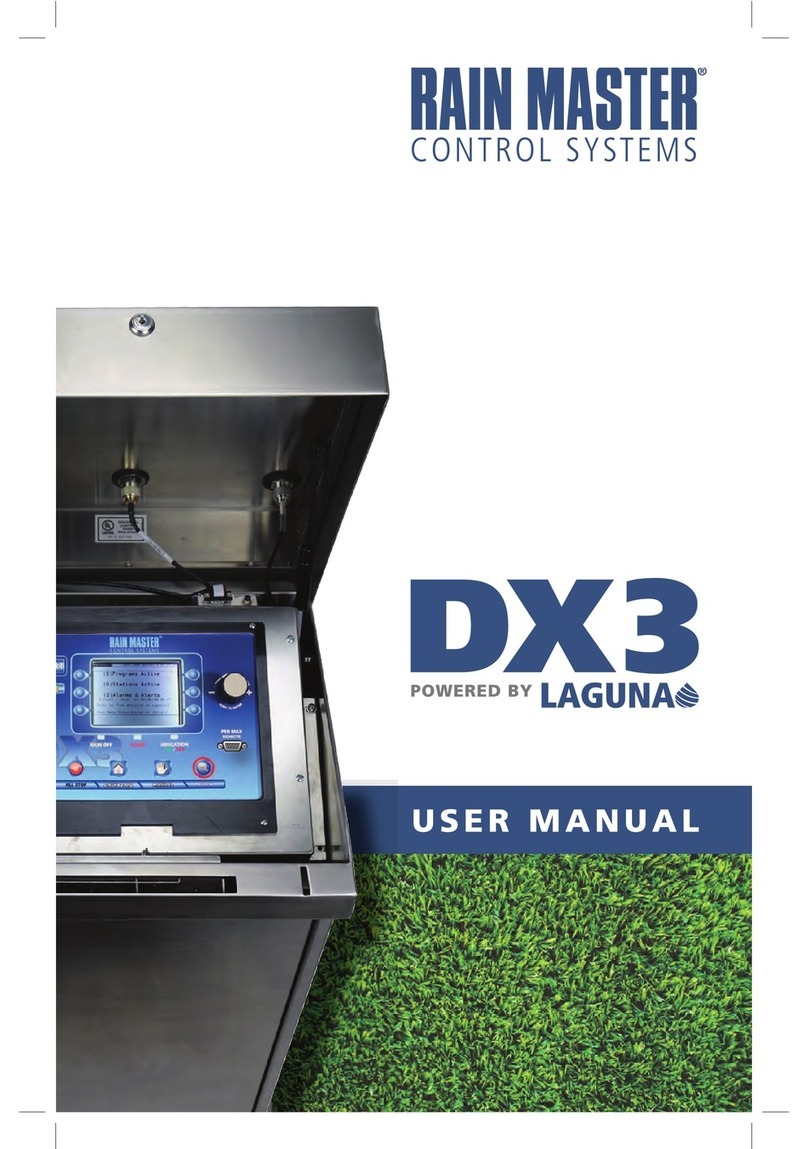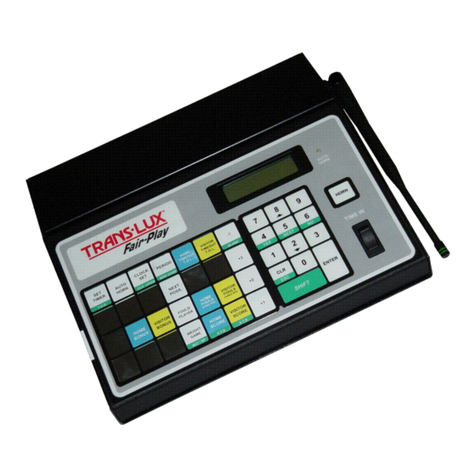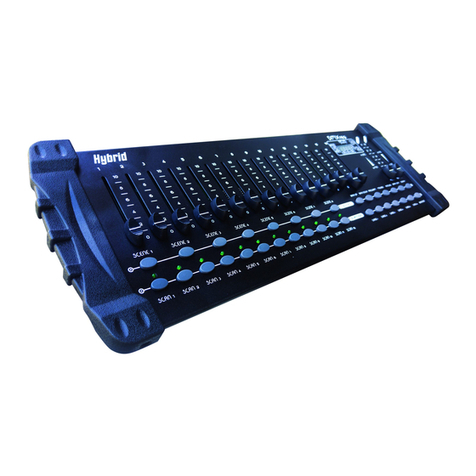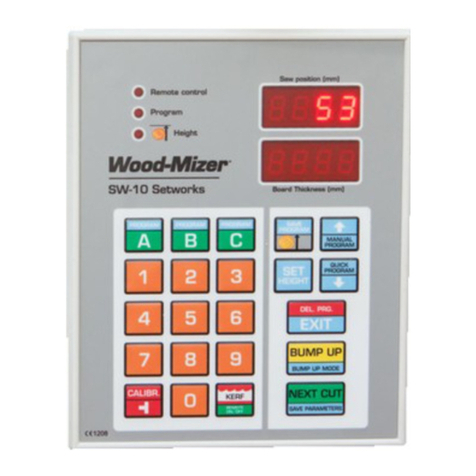
3 - INFORMATION ON INSTALLATION AND US
3.1 - PERMITTED USE
The instrument has been projected and
manufactured as a measuring and control device
to be used according to EN61010-1 for the
altitudes operation until 2000 ms.
The use of the instrument for applications not
expressly permitted by the above mentioned rule must adopt all the
necessary protective measures.
The instrument CANNOT be used in dangerous environments
(flammable or explosive) without adequate protection.
The installer must ensure that EMC rules are respected, also after
the instrument installation, if necessary using proper filters.
Whenever a failure or a malfunction of the device may cause
dangerous situations for persons, thing or animals, please
remember that the plant has to be equipped with additional devices
which will guarantee safety.
3.2 – MECHANICAL MOUNTING
The instrument, in DIN case 48 x 48 mm, is designed for flush-in
panel mounting.
Make a hole 45 x 45 mm and insert the instrument, fixing it with the
provided special bracket.
We recommend that the gasket is mounted in order to obtain the
front protection degree as declared. Avoid placing the instrument in
environments with very high humidity levels or dirt that may create
condensation or introduction of conductive substances into the
instrument.
Ensure adequate ventilation to the instrument and avoid installation
in containers that house devices which may overheat or which may
cause the instrument to function at a higher temperature than the
one permitted and declared.
Connect the instrument as far away as possible from sources of
electromagnetic disturbances such as motors, power relays, relays,
solenoid valves, etc.
The instrument can be removed from its housing from the front side
: it is recommended that the instrument be disconnected from the
power supply when it is necessary to carry out this operation.
3.3 - ELECTRICAL CONNECTION
Carry out the electrical wiring by connecting only one wire to each
terminal, according to the following diagram, checking that the
power supply is the same as that indicated on the instrument and
that the load current absorption is no higher than the maximum
electricity current permitted.
As the instrument is built-in equipment with permanent connection
inside housing, it is not equipped with either switches or internal
devices to protect against overload of current: the installation will
include an overload protection and a two-phase circuit-breaker,
placed as near as possible to the instrument, and located in a
position that can easily be reached by the user and marked as
instrument disconnecting device which interrupts the power supply
to the equipment.
It is also recommended that the supply of all the electrical circuits
connected to the instrument must be protect properly, using
devices (ex. fuses) proportionate to the circulating currents.
It is strongly recommended that cables with proper insulation,
according to the working voltages and temperatures, be used.
Furthermore, the input cable of the probe has to be kept separate
from line voltage wiring. If the input cable of the probe is screened,
it has to be connected to the ground with only one side.
We recommend that a check should be made that the parameters
are those desired and that the application functions correctly before
connecting the outputs to the actuators so as to avoid
malfunctioning that may cause irregularities in the plant that could
cause damage to people, things or animals.
3.4 - ELECTRICAL WIRING DIAGRAM
SSR: 8 mA / 8 VDC
RELAYS: 8A-AC1 (3A-AC3)
NO
(Max 20 mA)
PTC
NTC
ext.
gen.
OUT 12 VDC
SUPPLY
0..50/60 mV
0/4..20 mA
0/1..5 V
0/2..10 V
ACTIVE
0..1 V
ACTIVE
PASSIVE
(2 wires)
4..20 mA
4..20 mA
4
Pt100
TLK48 B
TC
INPUT
21 3 75 6 8
C
910
OUT2
NO
11
C
12
OUT1
250VAC
4 - FUNCTIONS
4.1 - MEASURING AND VISUALIZATION
All the parameters referring measurements are contained in the
group “
]
InP”.
Depending on the model required the input accept:
C: Thermocouples temperature probes (J,K,S and TECNOLOGIC
IRS Infrared sensors), mV signals (0..50/60 mV, 12..60 mV),
Thermoresistances PT100.
E: Thermocouples temperature probes (J,K,S and TECNOLOGIC
IRS Infrared sensors), mV signals (0..50/60 mV, 12..60 mV),
Thermistors PTC and NTC.
I: normalized analogue signals 0/4..20 mA
V: normalized analogue signals 0..1 V, 0/1..5 V, 0/2..10 V
Depending on the model, using par. “SEnS”, it’s possible to select
the type of input probe, which can be :
- for thermocouples J (J), K (CrAL), S (S) or for infrared sensors
serie TECNOLOGIC IRTC1 with linearization J (Ir.J) or K (Ir.CA)
- for thermoresistances Pt100 IEC (Pt1) or thermistors PTC
KTY81-121 (Ptc) or NTC 103AT-2 (ntc)
- for normalised signals in current 0..20 mA (0.20) or 4..20 mA
(4.20)
- for normalised signals in tension 0..1 V (0.1), 0..5 V (0.5), 1..5 V
(1.5), 0..10 V (0.10) or 2..10 V (2.10).
- for normalised signals in tension 0..50 mV (0.50), 0..60 mV (0.60),
12..60 mV (12.60).
We recommend to switch on and off the instrument when these
parameters are modified, in order to obtain a correct measuring.
For the instruments with input for temperature probes (tc, rtd) it’s
possible to select, through par. “Unit”, the unit of measurement
(°C, °F) and, through par. “dP” (Pt100, PTC and NTC only) the
desired resolution (0=1°; 1=0,1°).
Instead, with regards to the instruments with normalised analogue
input signals, it is first necessary to program the desired resolution
on par. “dP” (0=1; 1=0,1; 2=0,01; 3=0,001) and then, on par.
"SSC", the value that the instrument must visualise at the
beginning of the scale (0/4 mA, 0/12 mV, 0/1 V o 0/2 V) and, on
par. "FSC", the value that the instrument must visualise at the end
of the scale (20 mA, 50 mV, 60 mV, 5 V or 10 V).
The instrument allows for measuring calibration, which may be
used to recalibrate the instrument according to application needs,
by using par. “OFSt” and “rot”.
Programming par. “rot”=1,000, in par. “OFSt” it is possible to set a
positive or negative offset that is simply added to the value read by
the probe before visualisation, which remains constant for all the
measurements.
If instead, it is desired that the offset set should not be constant for
all the measurements, it is possible to operate the calibration on
any two points.
TECNOLOGIC spa - TLK 48 B - OPERATING INSTRUCTIONS - Vr. 03 - 12/04 - ISTR 06877 - PAG. 3









